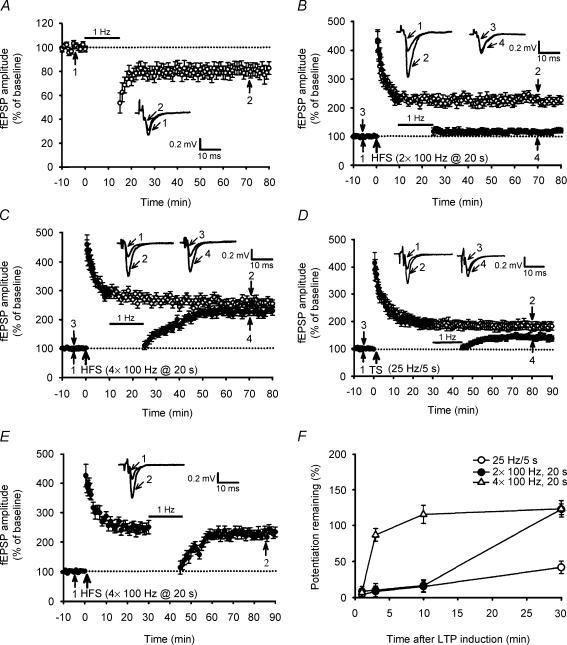Figure 1. The reversal of long-term potentiation (LTP) by low-frequency stimulation (LFS) is activity and time dependent.
A, summary of experiments (n = 8) showing that LFS at 1 Hz for 15 min elicits long-term depression (LTD). B, summary of experiments showing that LFS given 10 min after two trains of 100 Hz high-frequency stimulation (HFS) almost completely reversed LTP (n = 8; •), whereas fEPSPs in slices that received HFS without LFS exhibited persistent potentiation (n = 7; ○). C, summary of experiments showing that four trains of 100 Hz HFS induced a stable LTP (n = 8; ○). Application of LFS at 10 min after HFS initially depressed fEPSPs that subsequently recovered to previously potentiated levels (n = 8; •). D, summary of experiments showing that LFS given 30 min after a single tetanus (25 Hz for 5 s) revealed a significant reversal of LTP (n = 6; •). Field EPSPs in slices that received HFS without LFS exhibited persistent potentiation (n = 7; ○). E, summary of experiments showing that LFS given 30 min after four trains of 100 Hz HFS did not reveal a significant reversal of LTP (n = 6; •). F, summary data comparing the effects of LFS given at 1, 3, 10 and 30 min after LTP induction by three different stimulation protocols. The magnitude of potentiation remaining was calculated at 40 min after the end of LFS. In A–F, each value is the mean ± s.e.m. of independent determinations in six to eight slices. The superimposed fEPSP in the inset of each graph illustrates respective recordings from example experiments taken at the time indicated by number. Upward arrows indicate application of HFS. The horizontal bars denote the period of delivery of 1 Hz LFS. The horizontal dotted lines indicate the average value of the normalized amplitude during the control period.

